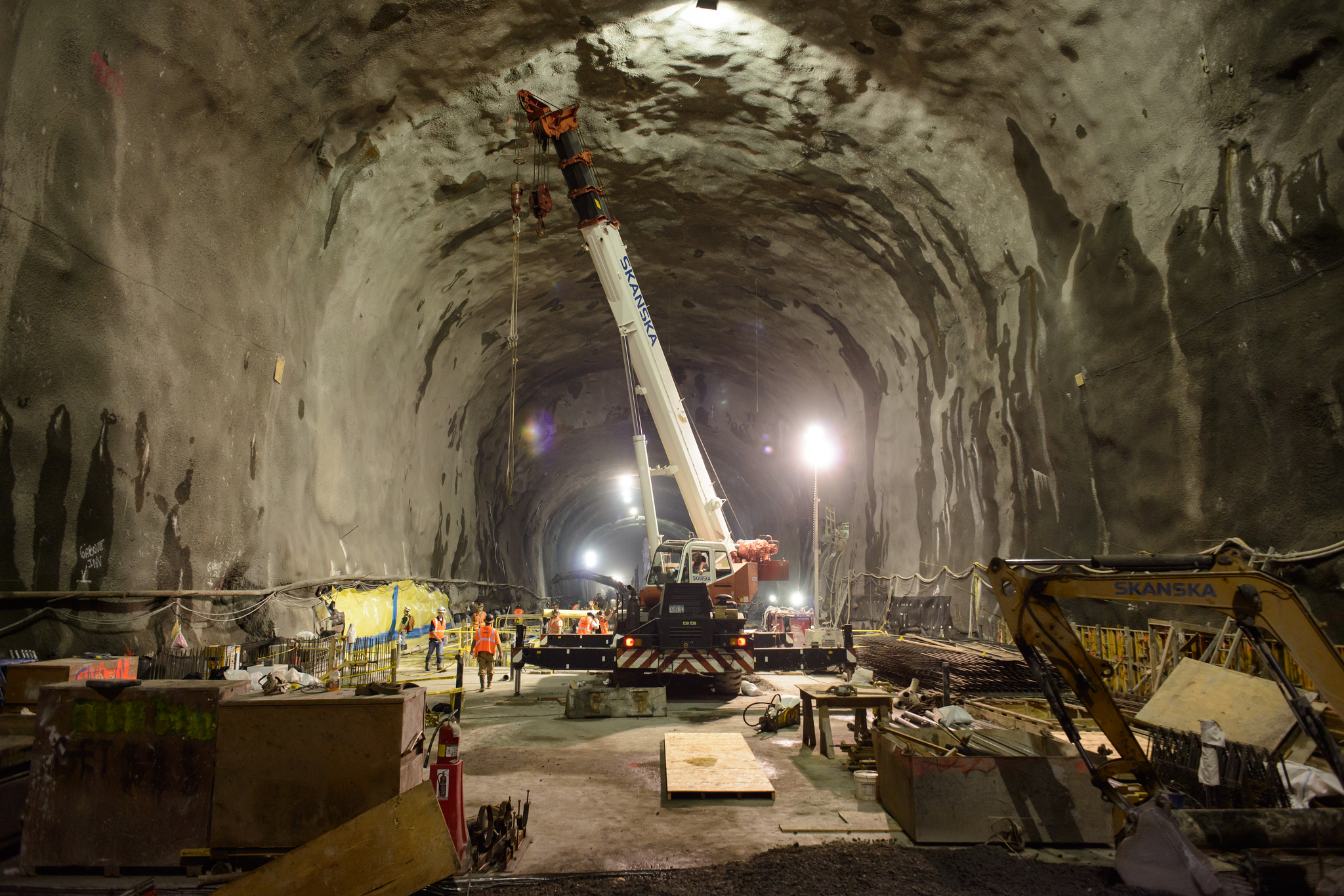Back in June 26, 2012, a Second Avenue subway construction crew blasted rock for the future 72 St. Station in Manhattan. At that time, Motherboard dove into the story of the longest-lasting transportation project in New York City’s history. First proposed in 1929 and again in 1951, but persistently hobbled by money woes and community opposition, the Second Avenue subway finally opened this year.
We went underground to see the construction of the subway—controlled explosions, and lots of manpower and machinery—being carried out back in 2013, and again when it opened just a few days ago. We went back this week to see the fruits of one of the largest transportation projects ever mounted in human history. Here is our journey.
Videos by VICE

Workers pour concrete during construction in 2013. The tunnels themselves are massive: Note the crane in the background. Image: Derek Mead
Constructing the subway has been a Herculean task. Explosions, carried out only during daylight hours, were meant to be controlled. But on August 2012, a blast to build a cavern that will hold the future 72nd St. station wasn’t, and rocks flew eight stories into the air. One tenants’ group is suing the MTA over proposals for an entrance to the 86th Street station, but the agency’s relationship with the community has warmed since construction began in 2011.

An MTA representative briefs reporters during a 2013 tour of the 2nd Avenue subway construction. Image: Derek Mead
One truth: the challenge of building a subway through some of the densest neighborhoods in America is compounded by the fact that Second Avenue’s century-old buildings weren’t exactly designed with the future in mind. “When you’re blasting and boring and doing other things around buildings that don’t have solid foundations—they have what are known as ‘rubble foundations,’” said Michael Horodniceanu, president of the Metropolitan Transportation Authority’s Capital Construction.

Construction in earnest in 2013. The work logistics weren’t too much different than that of a mine, except of course for it being directly under the streets of Manhattan. Image: Derek Mead
The construction was done bottom-up. Workers used explosives and heavy machinery and a giant refurbished 22-foot-wide tunnel boring machine—capable of digging about 66 feet per day—to excavate rock. They erected walls and installed insulation, using a sophisticated membrane system to better control water, the scourge of subways. To know where and how to dig, planners consulted a map, first drawn in 1865 by Egbert Viele, which illustrates the many waterways that criss-cross the island of Manhattan.

The 2nd Ave tunnel obviously isn’t just a subway tunnel, as this 2013 photo shows. The scale of excavation and construction required to build out all of the underground infrastructure for the subway is staggering. Image: Derek Mead
The Second Avenue subway finally opened on January 1, 2017 after an underground New Year’s launch party. The subway is an extension of the Q train with three extra stops going up north. The successful opening was met with relief and excitement from residents surrounding the 72nd St. station. “This is my first time riding the train since May,” said Michelle Russ, a resident of Jamaica, Queens in New York City. “I saw all these people in my way taking pictures and I was like, ‘What’s going on? I said Oh My God I’m at the Second Avenue subway!”
The new building at the 72nd Avenue station on its opening week. The station was open for business on January 1, 2017 and immediately put into use. Image: Madison Margolin
As is par for the course in New York City, commuters adapted quickly to the new train lines, and the highly anticipated project has already become a part of daily commutes. Transportation authorities in New York still have to tackle some of the other contentious projects in the city, such as revamping the L train, a task that threatens the only means of underground transport connecting the Williamsburg neighborhood in Brooklyn to Manhattan.
Passengers wait for the Q train at the station. This train has helped several commuters save time. Image: Madison Margolin
Even so, the Second Avenue Subway is a long-awaited success story for both man and machinery. We talked to a disabled woman who said this train makes her life much easier, and a Brooklyn resident who will save hours every week because of the project. It’s clear that for at least some people hacking it out in the city known for hustling, it was worth the wait.
The new station is a welcome sign of completion after decades of construction. Image: Madison Margolin
Happy travels, New York.
Get six of our favorite Motherboard stories every day by signing up for our newsletter .More
From VICE
-

Photo: CHRISsadowski / Getty Images -

Photo: Adrienne Bresnahan / Getty Images -

Photo: maiteali / Getty Images

